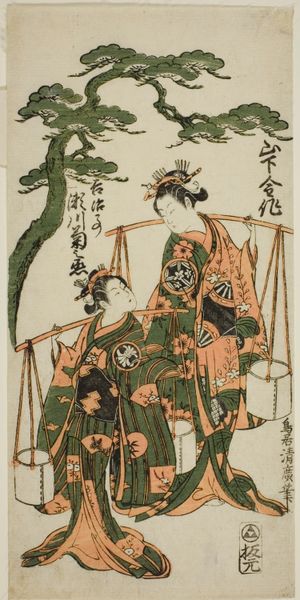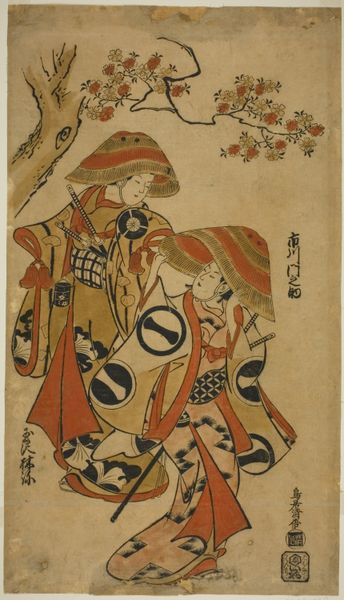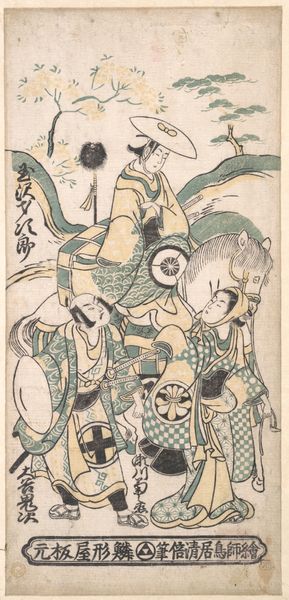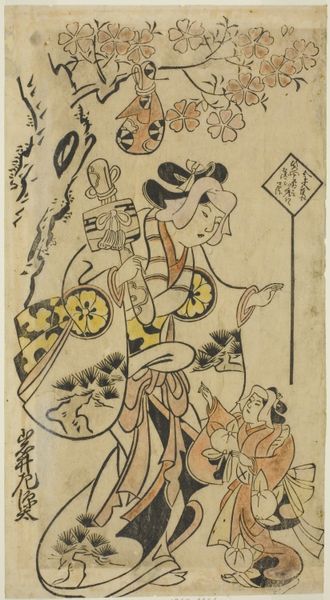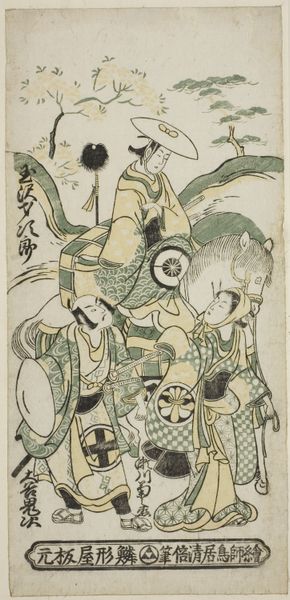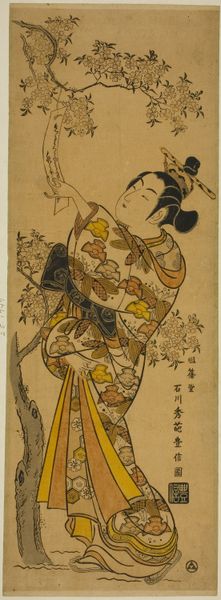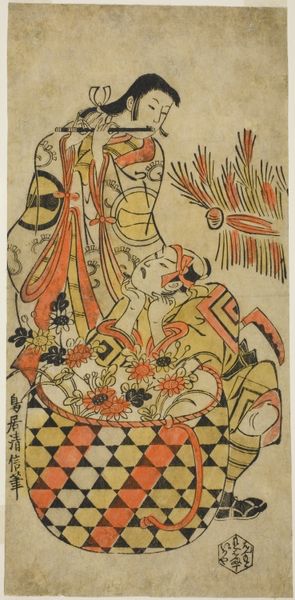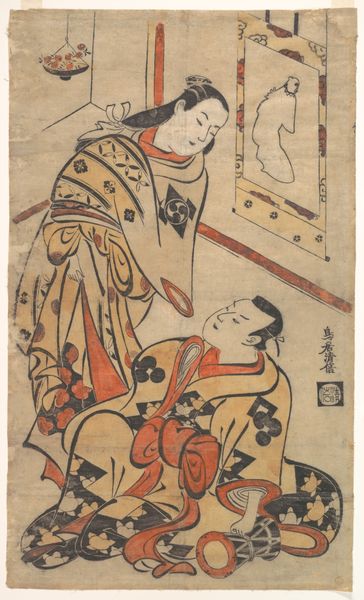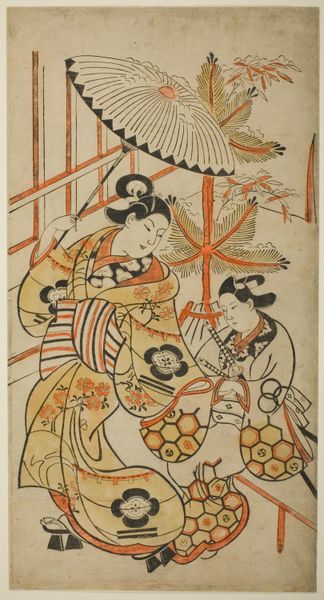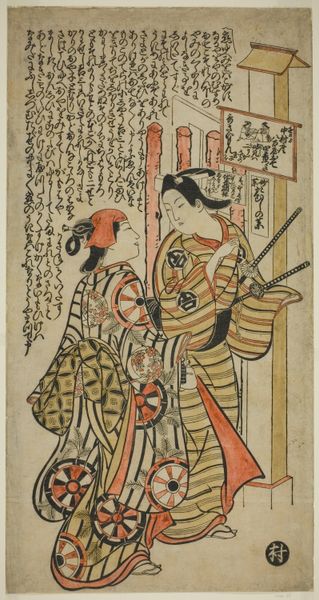
The Actors Fujita Hananojo and Ichikawa Danjuro II c. 1714
0:00
0:00
print, woodblock-print
#
portrait
# print
#
asian-art
#
ukiyo-e
#
woodblock-print
Dimensions: 29.6 × 14.5 cm
Copyright: Public Domain
Curator: Here we have a striking image, a woodblock print titled "The Actors Fujita Hananojo and Ichikawa Danjuro II," created around 1714 by Torii Kiyonobu I. It's currently housed at The Art Institute of Chicago. Editor: My eye is immediately drawn to the vertical composition and the somewhat naive rendering of the figures. It almost has the feel of a playbill, a dramatic announcement frozen in time. Curator: That's a very astute observation. Kiyonobu was indeed a key figure in establishing the Torii school of printmaking, known for its bold, stylized depictions of kabuki actors. These prints functioned as both advertisements and collector's items. Editor: It's interesting how the figures are positioned. The upper figure carries a box holding, it appears, a small doll? The symbolic weight of that small detail alone opens up numerous avenues for interpretation. Is it a commentary on illusion versus reality? Or is it hinting at a passing down of skill from one generation to the next? Curator: The doll is intriguing. And your interpretation gets to an important aspect of understanding this work within its cultural moment: it presents idealized versions of admired individuals, helping build their brands. Danjuro, especially, was known for his aragoto style, his exaggerated performance style, in Kabuki. This, too, is performance. Editor: There is also the interesting contrast in how they’re dressed, with stark geometries emphasizing one figure versus curling motifs in the robe above. Beyond aesthetic differences, there has to be meaning coded into those textile patterns? Curator: Absolutely. These patterns acted as identifiers, associated with certain roles and even certain families. The art lies in knowing these codes! This print circulated not only as advertising, but as social currency and records that spoke to who and what mattered to theatergoers. It solidified reputations within very prescribed parameters of artistry. Editor: Knowing more about the visual language helps contextualize how images served social rituals in this period. What first appears naive becomes intensely refined with that knowledge. Curator: Precisely. Examining this woodblock unveils how deeply entrenched cultural and theatrical politics were within Japanese society, demonstrating art’s participation in solidifying celebrity and establishing norms. Editor: It really brings new significance to something I initially saw as visually appealing but somewhat simplistic! Thank you!
Comments
No comments
Be the first to comment and join the conversation on the ultimate creative platform.
